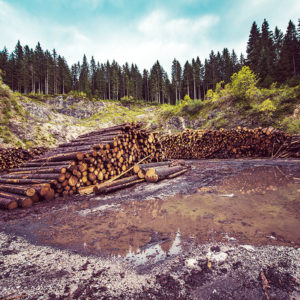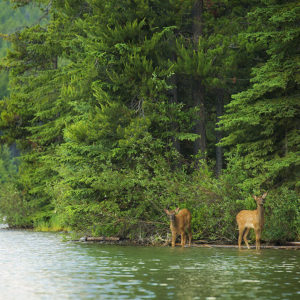Nature Canada Applauds Road Map for Canada-U.S. Collaboration
Last week, President Biden and Prime Minister Trudeau had their first (virtual) meeting, to discuss new ways to work together to combat the many urgent crises facing our countries, continent, and the world. In the meeting, the leaders agreed to take ambitious action to fight climate change and protect nature.
After the meeting, the Prime Minister and the President’s offices released a new document, called the “Roadmap for a Renewed U.S.-Canada Partnership,” which details the many ways the two countries will work together. Excitingly, the roadmap to collaborate on environmental protection and climate action included a major role for nature. The heads of state agreed to “be partners in protecting nature, including by supporting Indigenous-led conservation efforts”. They also agreed to advance nature-based climate solutions by restoring and conserving nature to fight climate change.
Protecting nature across our borders
This announcement comes just two short weeks after Nature Canada released our report, Allies for Nature – detailing how the two governments can work together to protect the ecosystems that know no borders. We are thrilled to see many of the priorities we outlined now included in the official roadmap document. Nature Canada welcomes these actions to protect the ecological corridors that run between our two countries, advance Indigenous-led conservation, and use nature-based solutions to fight climate change.
Following this first bilateral heads of state meeting, federal Minister of Environment and Climate Change, Jonathan Wilkinson, met with John Kerry, the U.S. Special Presidential Envoy for Climate. Together they committed to a new “High-Level Ministerial Dialogue on Climate Ambition” – which is a fancy way of saying they are committing to continuous engagement with each other for joint action to tackle climate change.
Making nature count means we have to count it
Wilkinson and Kerry agreed to improve climate adaptation, resilience, and security. To that end, they committed to “measure and manage land carbon sinks more effectively” and make them more resilient to wildfires and floods. One of the largest and most important carbon sinks in the world is the Boreal Forest, spanning across Canada’s northern regions. The Boreal Forest holds massive amounts of carbon in its rich soils, peatlands, and trees.
However, Nature Canada, together with our partner NRDC, uncovered last year that logging practices in the Boreal are undermining our climate goals and that there are significant annual emissions not being reported. Therefore, we’re glad to see the U.S. and Canada include a commitment to manage land carbon sinks more effectively.
Renewed hope for the future
This new and hopeful direction represents a brand new day compared to the destructive environmental agenda of the previous U.S. administration. Last week’s events, we hope, are just the beginning of ambitious actions between the U.S. and Canada to scale-up nature-based solutions to climate change, support Indigenous-led conservation efforts and protect the ecosystems and migratory paths that cross our borders.
Earlier this year, President Biden also signed an Executive Order committing the United States to protect 30% of land and freshwater, and ocean by 2030, a commitment Canada has already made. The U.S. Fish and Wildlife Service is also working to improve the law protecting migratory birds in the states, further to obligations under the Migratory Bird Convention, an international agreement signed with Canada as so many bird species travel back and forth between our two countries.
As the U.S. charts its path for becoming a nature champion, they can follow Canada’s example, and join the global High Ambition Coalition, to show the world they’re serious about protecting nature and that they are “back” on the world stage as an environmental leader. The U.S. can also learn from Indigenous nations and organizations in Canada who have been creating some of the first Indigenous Protected and Conserved Areas and making advancements in Indigenous-led conservation initiatives.
Exciting times ahead. Sign up for updates, and read our latest report to follow along as the door continues to swing wide-open to an alliance for nature.



